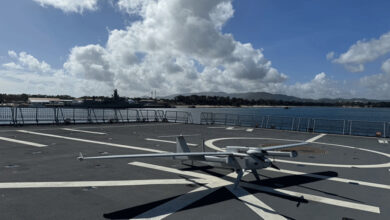Philippines Gets Advanced Air Surveillance Radar From Japan
The Philippines has acquired an advanced radar system from Japan to bolster its air surveillance capability.
A Mitsubishi-manufactured FPS-3ME radar was turned over to the Philippine Air Force (PAF) on Wednesday during a ceremony at the Wallace Air Station in the north of the country.
The surveillance system is expected to cover hundreds of miles and help protect the country’s sovereignty.
“With over 7,000 islands to guard, the PAF needs the radar system to keep watch of the entire archipelago with greater accuracy and efficiency,” PAF chief Lt. Gen. Stephen Parreño told reporters. “This becomes even more crucial given the evolving security landscape in the region.”
Three more Japanese radar systems are expected to arrive in the Philippines as part of a 5.5 billion peso ($98.7 million) deal.
Another milestone!
Japan turns over the first Air Surveillance Radar System to PAF.
Strengthening security ties and enhancing the AFP's capabilities, Japan remains committed to supporting the Philippines. #StrategicPartnership pic.twitter.com/o141MXC66a
— Ambassador of Japan in the Philippines (@AmbJPNinPH) December 20, 2023
‘Major Leap in Capability’
Mitsubishi’s FPS-3ME is a long-range, active electronically scanned array radar capable of simultaneous detection and tracking of multiple aerial targets.
It has a range of 330 nautical miles (380 miles/611 kilometers).
Parreño said the acquisition of the advanced radar represents “a major leap in our capability to protect our sovereign territory and ensure the safety of our citizens.”
For Philippine Defense Secretary Gilbert Teodoro, putting the surveillance system and its command-and-control building in the country’s north is strategic because it is the exit point of international airspace and the entry point of Philippine airspace.
It is also naturally open to the West Philippine Sea, where Chinese ships have reportedly been conducting unauthorized operations.
“We will have a clear picture, not only in the West Philippine Sea but also in other parts of the Philippines’ sea and air domains [to detect] those who are entering our [exclusive economic zone],” Teodoro stated.














